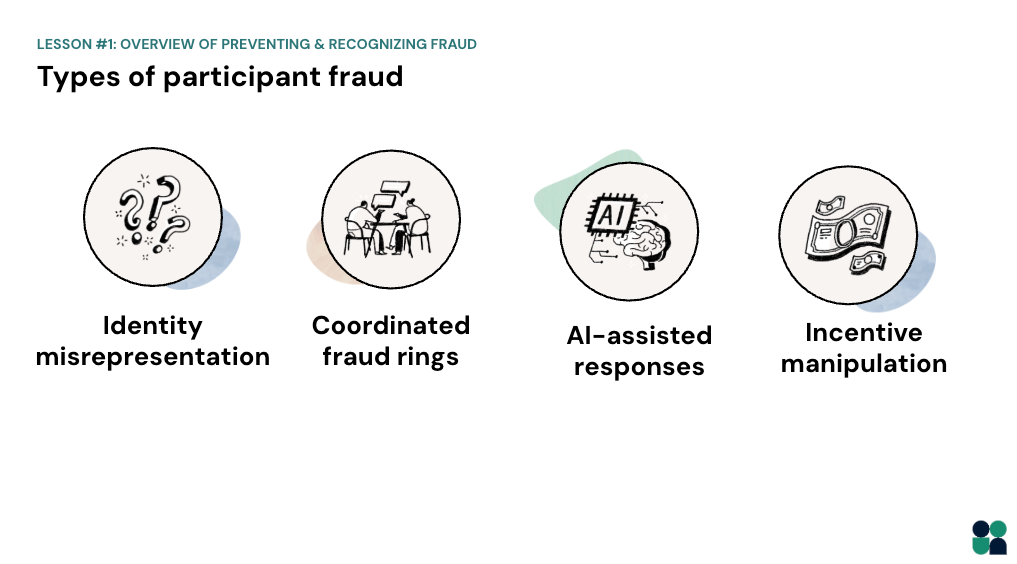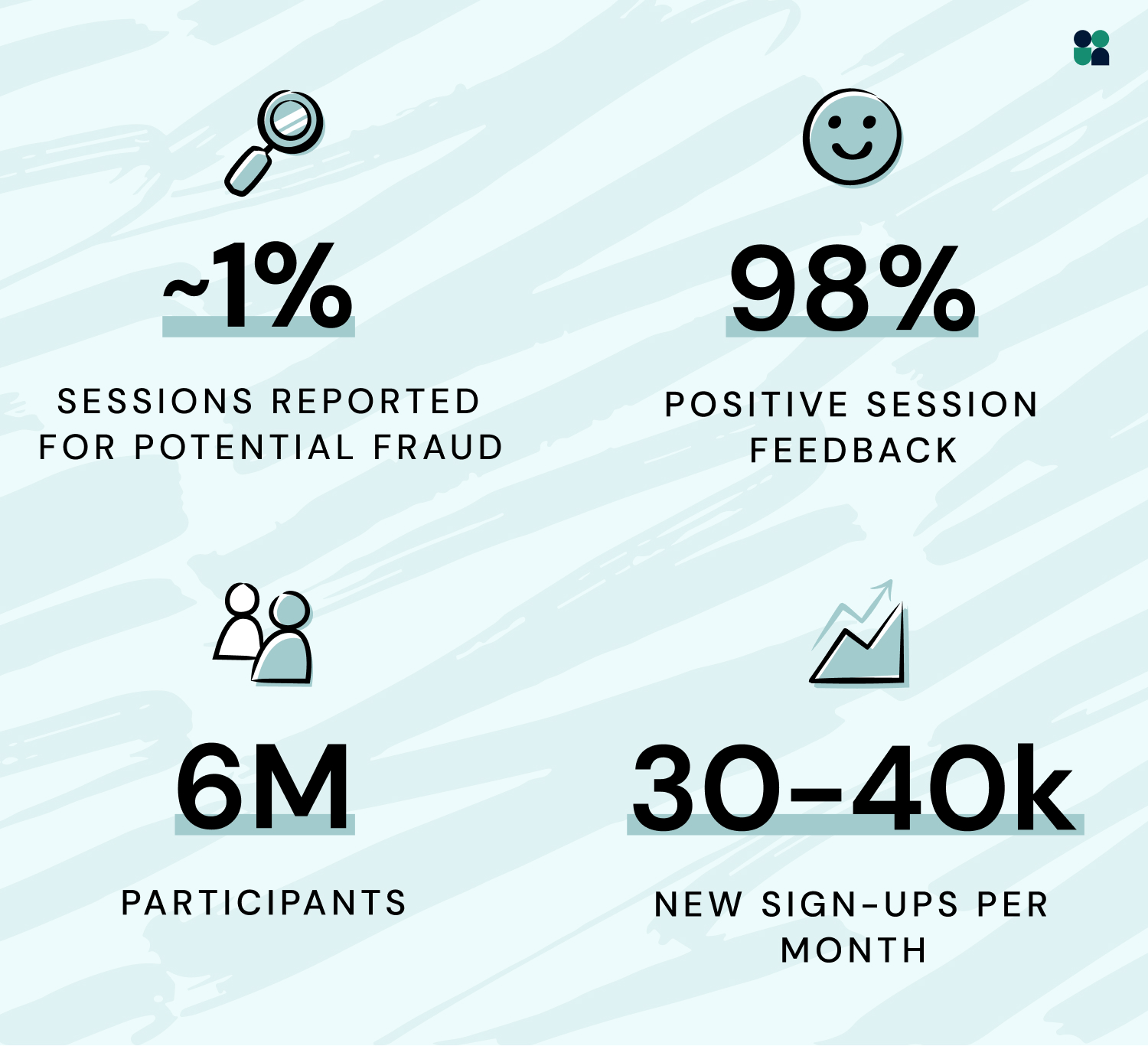

Overview of Preventing & Recognizing Fraud
In this first lesson of our Preventing & Recognizing Fraud course, you’ll learn about:
- Types of participant fraud
- How fraud has evolved with the development of AI
Fraudulent participants aren’t just a nuisance—they can derail your research. They waste your team’s time and money, erode trust in your data, and can lead to misleading product decisions if they slip through. That’s why it’s critical to understand what fraud looks like and how to stop it before it impacts your work.
📹 Prefer watching to reading? This content is available as both an article and a video. Watch our Senior Product Manager, David Prentice, take you through the content in the video below or keep reading to dive in!
Types of participant fraud

Fraud can take many forms, and it’s constantly evolving. In this section, I’m going to walk you through four common fraud tactics researchers face today:
- The first pattern is misrepresentation of identity or experience: This is when participants lie about their demographics, background, or product use just to qualify.
- Next, we have coordinated fraud rings or “fraud farms”: This is when groups work together to infiltrate studies at scale.
- More recently, fraudsters have turned to AI-assisted or fully synthetic respondents, where fraudsters generate applications and responses using AI tools, which makes fraud harder to spot.
- And last, we have incentive manipulation: Tactics like creating duplicate accounts (“identity laundering”), reselling incentives, or abusing crypto-based payouts.
Fraud in research used to look like simple misrepresentation—someone fudging their age or exaggerating their experience. Today, it’s a global issue. Bad actors use sophisticated tools, automation, and AI to infiltrate studies at scale. As research grows in value, fraudsters see opportunities, which makes ongoing prevention more important than ever.
Learn more about how fraud has evolved and what to expect in the next decade of user research, from Michele Ronsen, founder of Curiosity Tank.
User Interviews takes fraud seriously

At User Interviews, we know your research is only as good as your participants. That’s why we invest heavily in fraud prevention.
From advanced machine learning models to human oversight, our fraud deterrence systems are built to detect and deter fraud before it impacts your studies. You’ll learn more about these protections in more detail in the next lesson—but for now, know that fraud is real, it’s evolving, and we take it seriously so you can focus on collecting insights with confidence.
Keep learning


How User Interviews Deters Fraud




